PERFORMANCE ENHANCERS
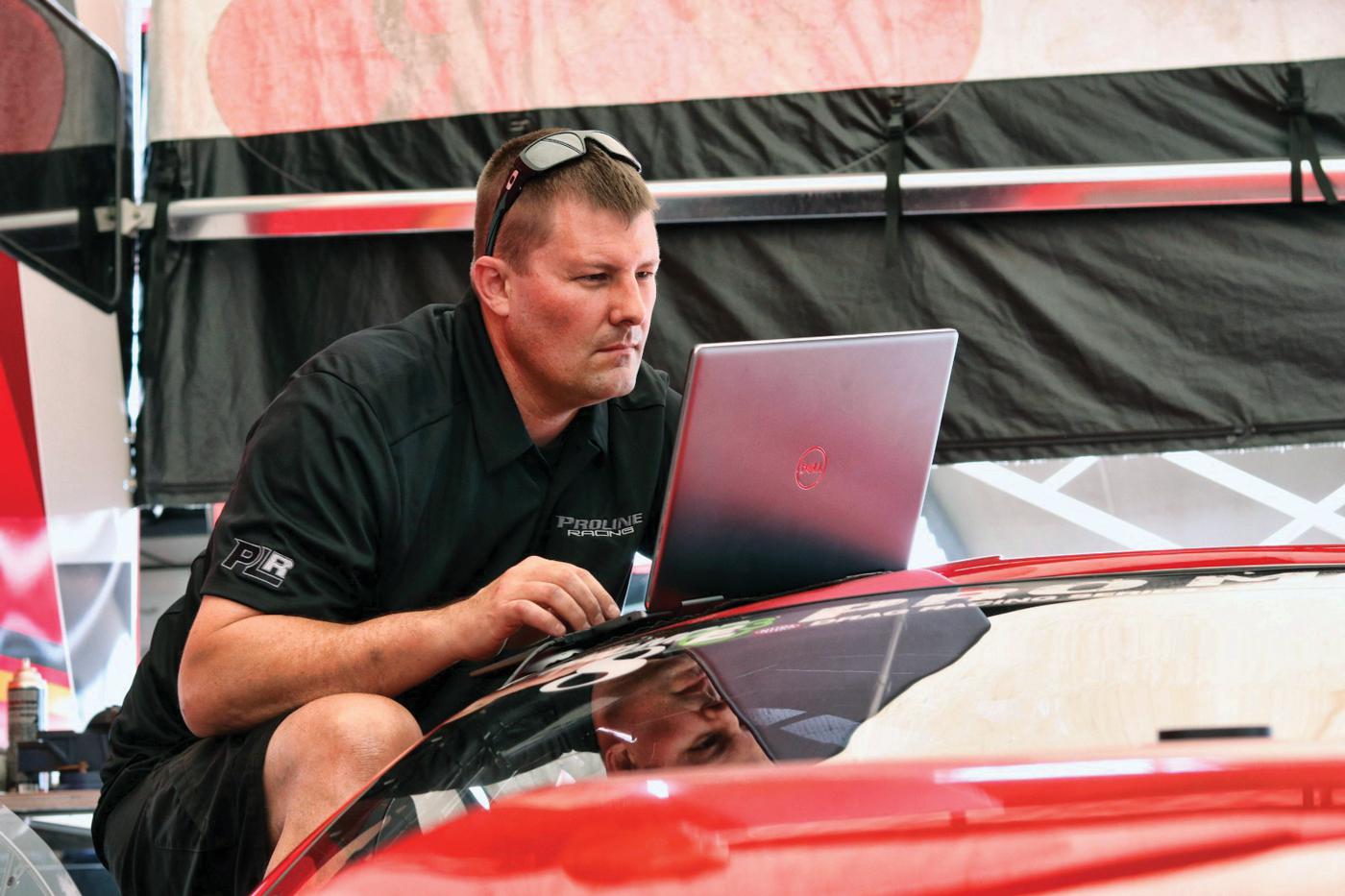
Photo courtesy of Proline Racing.
Ongoing developments in data acquisition and sensor technology are making it easier than ever to pinpoint where gains can be found.
Although performance telemetry might seem like a mere novelty in street-driven cars, it has become an essential tool in motorsports. As teams search for ways to shave off tenths wherever they can, data acquisition not only provides information about a driver’s technique but also how the vehicle’s setup is reacting to those inputs, and what that translates to in terms of performance on a given course.
Data acquisition systems have become increasingly sophisticated over the years, and the ability to pinpoint where gains can be found has become more identifiable in turn. But as Matt Parlett of Computech Systems in Charlotte Hall, Maryland, explained, some have been slow to adopt these modern methods of race program improvement. “You can’t put together a race car without understanding how to make things work, so all of these folks are comfortable with connecting a wire from one place to another and crimping a terminal on it—that’s easy for them,” he said. “The biggest hang-up we see is the fear of computers, and a resistance to learning to use the software effectively.”
Tim Michaliszyn of Performance Electronics in Cincinnati, Ohio, told us that when it comes to tuning, old habits can be hard to break. “Some people are resistant to use data acquisition, or really anything that isn’t 100% mechanical—there’s almost a bit of fear of having to use computers in order to use this information,” he explained. “They’ve done something a certain way for a long time and they’ve never questioned that, or looked for new ways to improve their techniques.”
But these systems have also become notably more refined and user-friendly in recent years, and the tide is starting to shift as a result. “With the technology continuing to advance across the board, the end user is becoming more aware that he or she really needs a data acquisition system to log a certain set of features,” said Roger Conley of Racepak Data Systems, part of Holley Performance Products, Bowling Green, Kentucky. “And people are less intimidated by it now—they’re definitely embracing it now more than ever before. In the past, data acquisition was like voodoo, and a lot of people had it because their engine builder or someone else told them they had to have it. Today, there are more people who’re willing to spend the money because they have a better understanding of the benefits and they’re willing to open their mind to it.”
And as data acquisition continues to evolve, the capabilities of these systems—and the methods available to acquire and interpret various types of data—is expanding on several different fronts.
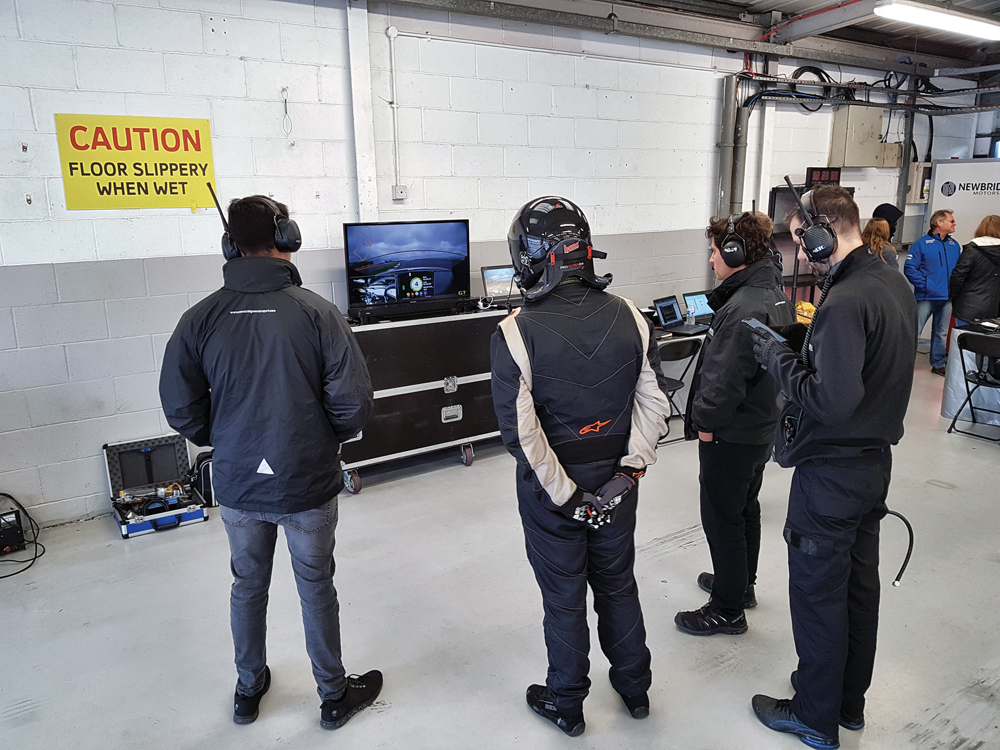
LATEST AND GREATEST
Michaliszyn said that ongoing improvements in core technology continue to guide the path toward greater capability. “Much of it comes down to processing power and storage capacity, which translates to how much you’re capable of recording and how fast you’re able to record it,” he explained. “Better processing translates to faster sampling rates, and that gives you more information. If something goes wrong for a fraction of a second you can actually view that data, whereas you might have missed that with an older system.”
The enhanced computational horsepower has also opened up the door to new ways of visualizing that data as well. “Right now, the products that seem to be in highest demand are the logging systems that also capture video,” said Paul Ferreira of Racelogic, Buckingham, United Kingdom. “These systems can synchronize the data and the footage, and that makes it much easier to understand the data that the system is providing. Before this technology was available, the driver would have to press a button on the steering wheel that would put a marker in the data logger so they could look at it later—that’s no longer needed now. Back then you’d have all sorts of squiggly lines and an engineer interpreting that raw data, and then a driver providing feedback on how the car felt and what it was doing at that moment. With video they can look directly underneath that footage and point to the related data. Issues are much easier to identify this way, and it starts to make the ‘data acquisition guy’ more and more redundant.”
It also can provide a better understanding of what is causing a given issue, Ferreira added. “You typically want one feed of the front of the car and another of the driver so you can see exactly what the driver was doing at that specific moment,” he said. “So our flagship system right now is a dual high-definition camera system, but a four-camera high-definition system is currently in development, and that’s going to provide a clear visual representation of all the driver’s inputs with the associated data. A standard system might tell you what the steering angle is at any given time, but without that video you don’t know if the driver was hesitating because he was moving one hand back and forth between the steering wheel and the shifter, or something along those lines. Those are the kinds of things that raw data doesn’t get.”
REDUCING COMPLEXITY
Considering the technological obstacles faced by some users, as earlier noted by Parlett and Michaliszyn, it should come as no surprise that substantial efforts have been made by system developers to simplify these data acquisition products and improve their overall ease-of-use.
“Our V-Net systems use CAN (Controller Area Network) bus technology for all the sensors,” Conley said. “That technology gives us the ability to daisy chain multiple sensors off of one cable, and they all communicate over one network. That tremendously reduces the amount of copper wiring needed in the vehicle, which saves weight and makes wiring the system much more straight-forward. And because it is CAN bus, the modules connected to the sensors are ‘smart’ in that they have microprocessors in them, so they’re virtually plug-and-play. Once they’re hooked up and connected to the data logger, you fire up the laptop and tell it to read what’s there, and it just populates and formats it for you automatically.”
That design not only means the wiring is less likely to be scored or otherwise damaged and provide inaccurate readings, it also translates to greater compatibility with other electronically controlled components. “The ability to adapt to different EFI systems has been a popular trend over the past few years,” he added. “That communication allows the logger to collect data directly from them, whether that’s a Holley EFI product or another brand. That reduces complexity as well—you don’t have to have multiple throttle position sensors or what have you; we can just read what’s already on the car.”
These simplification efforts have also expanded the ways in which end users can access that data as well. “One of the key improvements we’ve recently seen is in the realm of wireless technology, and the ability to view this information over Bluetooth,” said Michaliszyn. “These days everyone has a smartphone in their pocket, so instead of having to connect a laptop and pull up a data log, you can just use an app on your mobile device. That can help keep costs down and prove to be far more convenient—not just for data acquisition, but also for system configuration.”
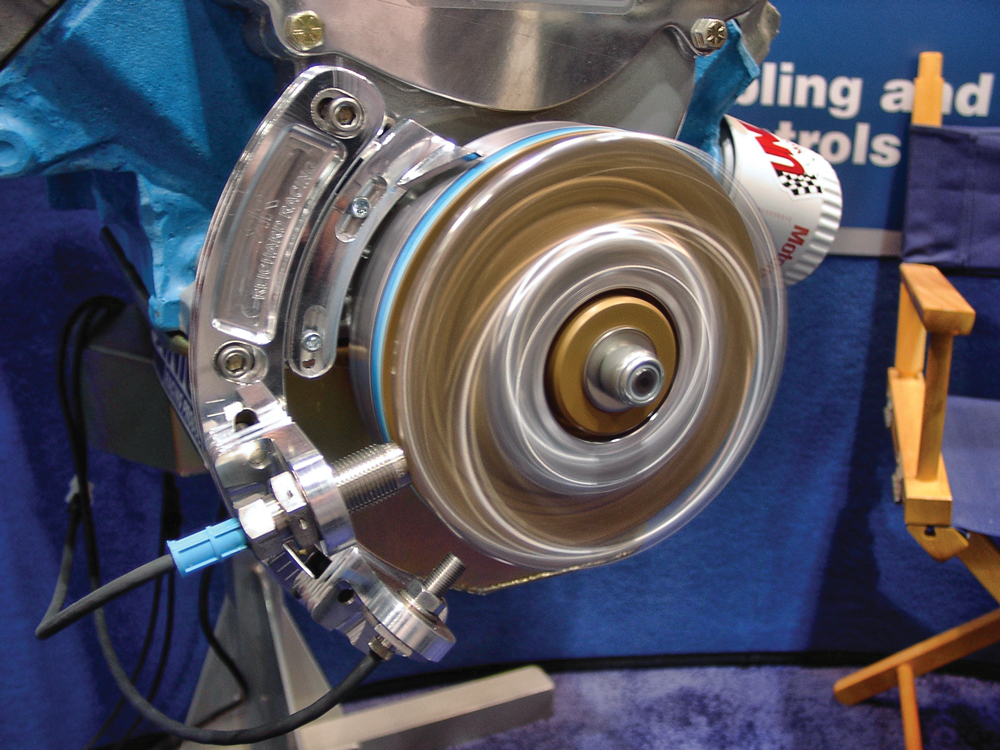
The software itself may be the most crucial component, though—after all, data isn’t worth much if it can’t be used effectively. “The biggest thing is being able to use the software to its full potential,” said Parlett. “So for us, a big part of the focus on the software side is streamlining processes, keeping things organized, and making the data easier to digest. The software is the thing you’re pounding on every day—if the user isn’t comfortable with it and it’s not easy to use, they’re not going to end up using the product.”
And for Computech, that translates to a software interface that’s designed to be adaptable to a user’s preference. “For instance, you can have a view that will show you your rpm at the top and your temperatures below, or in the Pressures view it would show you your rpm’s at the top and your pressures below. Instead of getting overwhelmed by looking at all these different types of data simultaneously on one screen, it allows [you] to take in each element one at a time if you prefer to view it that way,” added Parlett.
GETTING YOUR MONEY’S WORTH
In order to get the most out of a data acquisition system, you must first ensure the system is bringing in accurate data, and Conley told us that much of this depends on the condition of the vehicle itself.
“I often come across people who’re downloading their data, reading it, and then go try to make tuning changes to the car without first evaluating the health of the car,” he said. “So I’ll look at that data and ask, ‘Why is your battery voltage four volts lower than it’s supposed to be?’ Because they’re not performance-related sensors, folks tend to overlook things like that. You have to use it as a diagnostic tool first and foremost, then move on to performance tuning.”
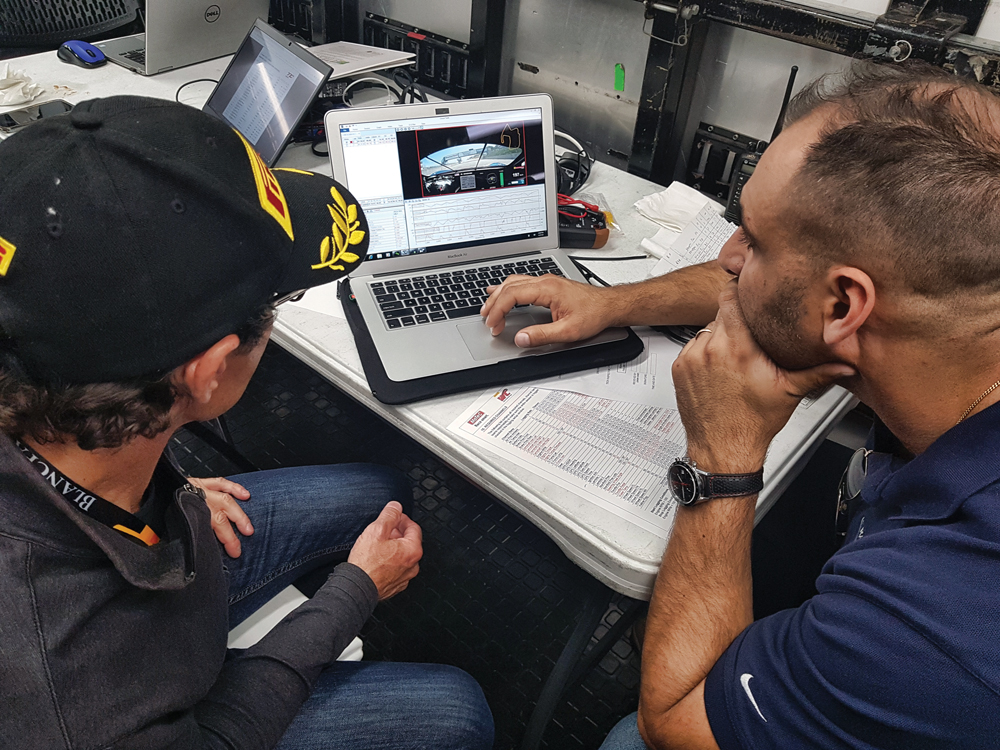
He said that in situations where the user is working on the car at the track, it can be very easy to get tunnel vision while troubleshooting. “I’ll be on the phone working with a customer who’s having a problem with the data logger that’s doing all this unusual stuff, and one of the first things I’ll ask is if the car is running okay,” Conley explained. “Nine times out of 10 they’ll tell me that the car is running poorly. So here we are, trying to fix the data logger, but what we really have is a car problem. If you fix the car problem first, you may find that the data logger problem just resolves itself. It’s very easy to go down a rabbit hole like that, especially if you’re at an event and you’ve got three or four other guys with you who all think they know what’s wrong and none of them have the same advice.”
Jeff McCants of Smith Systems in Brevard, North Carolina, said that with crankshaft and driveshaft data, the setup and installation of the sensors can be a factor as well. “What we often find is that the tip of the sensor may not be appropriately positioned with the gear or magnet that it’s taking a reading from,” he explained. “It’s crucial that it’s aligned properly to get accurate data—you want to make sure you’re looking directly at your target. You also want to make sure that your air gap, or the distance between the tip of the sensor and that target, is exactly what it needs to be based on the product’s instructions. It’s not about mounting these sensors in the most convenient place—it’s about putting them in the most ideal place for the sensor to get an accurate reading.”
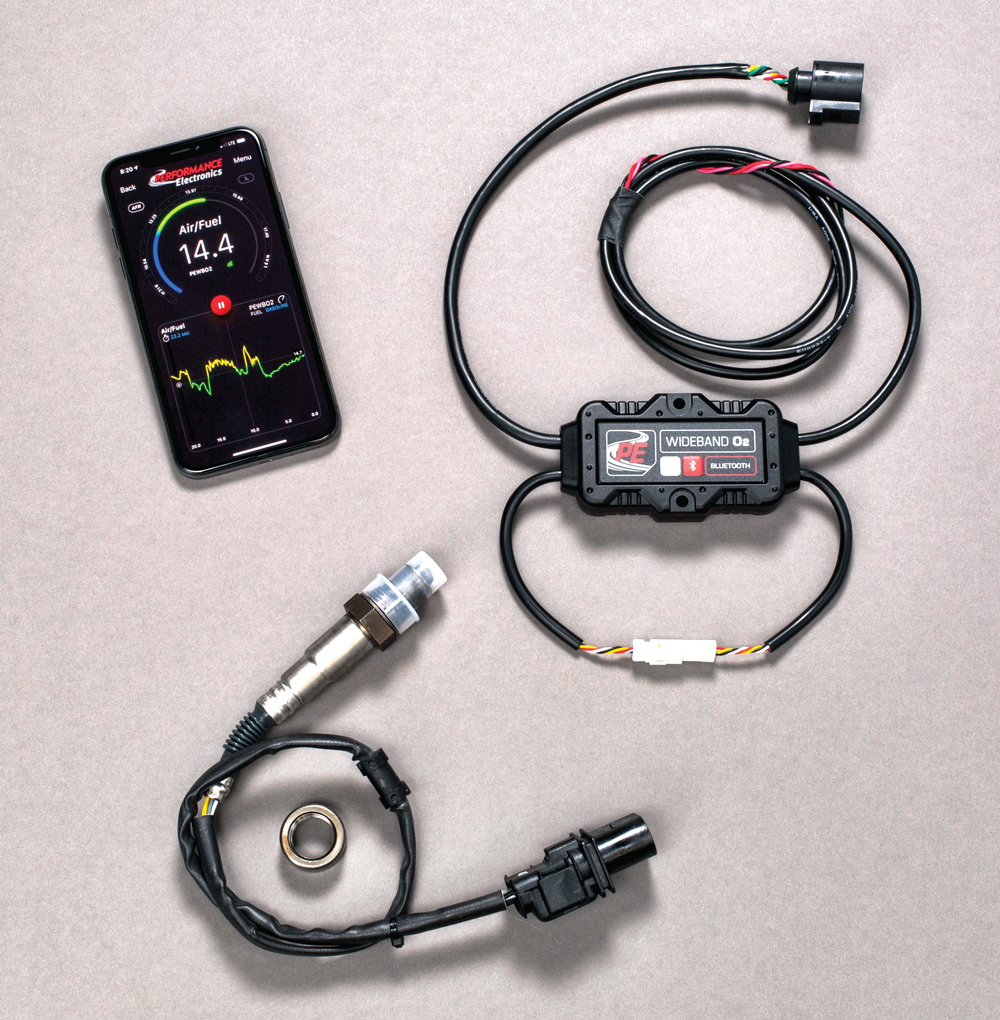
Michaliszyn emphasized that these factors can affect not only a sensor’s accuracy, but its longevity as well. “It’s important to make sure the installation is done right because, when it’s done improperly, it can shorten the lifespan of the sensor. In the case of pressure transducers like an oil pressure sensor, a lot of times we’ll see those sensors fail prematurely due to engine vibration, whereas just using a remote-mount kit or an external block with that sensor element would extend the life of the sensor significantly.”
But Parlett noted that simply leveraging educational resources can prevent problems before they ever happen. “If there’s one piece of advice I’d give to someone installing a data logger, it wouldn’t be about the installation—most of these folks have that part covered. It’s about not being afraid to spend a half-hour watching a few different videos that will allow you to get the most out of the system. A lot of times a customer will call us really frustrated and then they’ll watch our video tutorials. Later on, that same customer will call us back and say something like, ‘Hey, everything’s working great now and I’m overlaying runs—what does this little spike mean?’ And that’s always a good feeling, because you know they’ve now got the confidence to use the product to its maximum [potential].”
 MEMBERSHIP LOGIN
MEMBERSHIP LOGIN JOIN PRI
JOIN PRI


